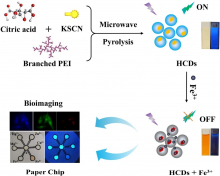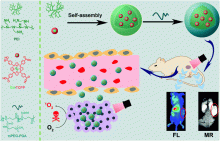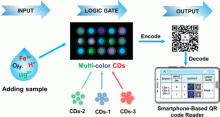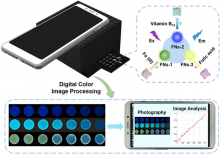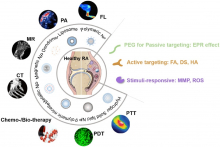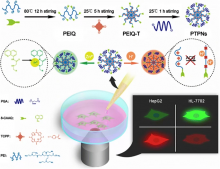Hybrid theranostic microbubbles for ultrasound/ photoacoustic imaging guided starvation/low-temperature photothermal/hypoxia-activated synergistic cancer therapy
Tian, F.; Zhong, X. J.; Zhao, J. K.; Gu, Y. T.; Fan, Y. D.; Shi, F.; Zhang, Y.; Tan, Y. H.; Chen, W.; Yi, C. Q*.; Yang, M*
J. Mater. Chem. B, 2021, 9, 9358-9369
?https://doi.org/10.1039/D1TB01735G
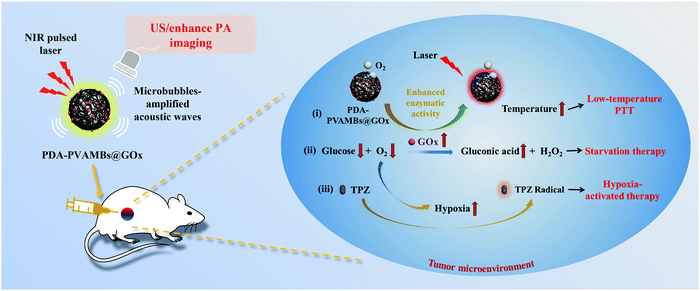
Abstract. Constructing a theranostic agent for high-contrast multimodality imaging-guided synergistic therapy with long-term tumor retention and minimum systemic side effects still remains a major challenge. Herein, a hybrid microbubble-based theranostic platform was developed for dual-modality ultrasound (US) and enhanced photoacoustic (PA) imaging-guided synergistic tumor therapy by combining starvation therapy, low-temperature photothermal therapy (PTT), and hypoxia-activated therapy, based on polydopamine (PDA) doped poly(vinyl alcohol) microbubbles loaded with glucose oxidase (GOx) (PDA–PVAMBs@GOx) and hypoxia-activated prodrug (HAP) tirapazamine (TPZ). For dual-modality US/enhanced PA imaging, PDA–PVAMBs provided 6.5-fold amplified PA signals relative to freely dispersed PDA nanoparticles (PDA NPs). For synergistic cancer therapy, oxygen (O2) carried by PDA–PVAMBs@GOx was first released to promote starvation therapy by loaded GOx. Then, moderate near-infrared (NIR) laser irradiation triggered PTT and improved enzymatic activity of GOx with its optimal activity around 47 °C. Subsequently, GOx-mediated tumor starvation depleted O2 and exacerbated the hypoxia environment, thereby activating the toxicity of TPZ in the tumor site. Through dual-modality US/PA imaging monitoring, PDA–PVAMBs@GOx with long-term retention (∼7 days) combined with PTT and TPZ significantly inhibited the growth of solid tumors with minimum systemic side effects, which might be a powerful tool for effective tumor treatment.
Microwave-assisted synthesis of colorimetric and fluorometric dual-functional hybrid carbon nanodots for Fe3+ detection and bioimaging
Shi, Y. P.; Liu, J. J.; Zhang, Y.; Bao, J. F.; Cheng, J. L*.; Yi C. Q*
Chin. Chem. Lett., 2021, 32, 3189-3194
?https://doi.org/10.1016/j.cclet.2021.03.022
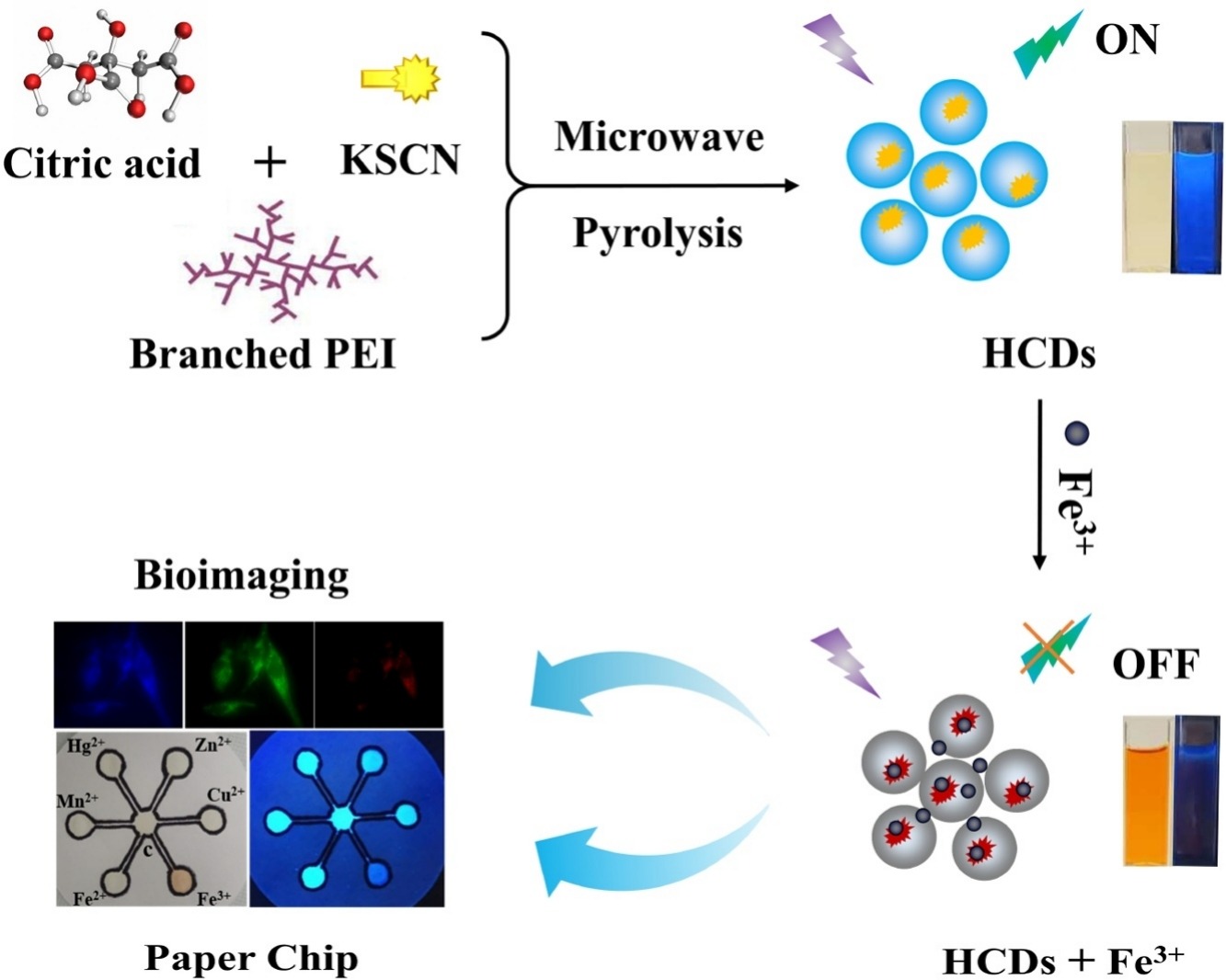
Abstract. Carbon nanodots (CDs) based fluorescent nanoprobes have recently drawn much attention in chemo-/bio-sensing and bioimaging. However, it is still challenging to integrate the colorimetric and fluorometric dual readouts into a single CD. Herein, novel hybrid CDs (HCDs) are prepared by a simple microwave-assisted reaction of citric acid (CA), branched polyethyleneimine (BPEI) and potassium thiocyanate (KSCN). As-prepared HCDs show extraordinary properties, including excitation-dependent emission, satisfactory fluorescence quantum yield (46.8%), excellent biocompatibility and optical stability. Significantly, the fluorescence intensity at 450 nm exhibits linear correlation over the Fe3+ concentration from 1 μmol/L to 150 μmol/L with a detection limit (LOD) of 52 nmol/L. Meanwhile, the solution color changes from colorless to orange, and the absorbance at 460 nm increased linearly with Fe3+ concentration ranging from 0.02 mmol/L to 5 mmol/L (LOD: 3.4 μmol/L). All the evidence illustrates that the HCDs can be conditioned for specific Fe3+ sensing with colorimetric and fluorometric dual readouts, which has also been verified with paper-based microchips. The possible mechanism is attributed to the specific interactions between surface functional groups on the HCDs and Fe3+. Additionally, the HCDs are successfully applied in sensing Fe3+ in wastewater and living cells, demonstrating its potential applications in future environment monitoring and disease diagnosis.
Gadolinium-porphyrin based polymer nanotheranostics for fluorescence/magnetic resonance imaging guided photo- dynamic therapy
Chen, W. D.; Zhao, J. K.; Hou, M. F.; Yang, M.; Yi, C. Q*
Nanoscale, 2021, 13, 16197-16206
?https://doi.org/10.1039/D1NR04489C

Abstract. Nanotheranostics for fluorescence/magnetic resonance (FL/MR) dual-modal imaging guided photodynamic therapy (PDT) are highly desirable in precision and personalized medicine. In this study, a facile non-covalent electrostatic interaction induced self-assembly strategy is developed to effectively encapsulate gadolinium porphyrin (Gd-TCPP) into homogeneous supramolecular nanoparticles (referred to as Gd-PNPs). Gd-PNPs exhibit the following advantages: (1) excellent FL imaging property, high longitudinal relaxivity (16.157 mM−1 s−1), and good singlet oxygen (1O2) production property; (2) excellent long-term colloidal stability, dispersity and biocompatibility; and (3) enhanced in vivo FL/MR imaging guided tumor growth inhibition efficiency for CT 26 tumor-bearing mice. This study provides a new strategy to design and synthesize metalloporphyrin-based nanotheranostics for imaging-guided cancer therapy with enhanced theranostic properties.
Logic gate design using multi-color fluorescent carbon nanodots for smartphone-based information extraction
Xiao, M.; Zhou, Q. Q.; Zhang, H.; Zhou, L. F.; Ma, J. P.; Yi, C. Q*
ACS Appl. Nano Mater., 2021, 4, 8184-8191
?https://doi.org/10.1021/acsanm.1c01413
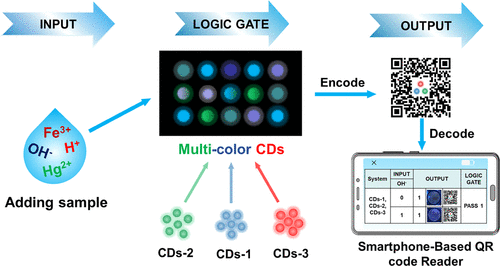
Abstract. Carbon nanodot (CD)-based logic gates, depending on the fluorescence response of CDs toward various chemicals and biological inputs, have attracted increasing research attention recently. However, it is still challenging to transform multicolor CD-based logic operations into convenient, reprogrammable, and independent readout sensing systems for practical applications. In this study, blue (CD-1), green (CD-2), and red (CD-3) emissive CDs were synthesized and conditioned to implement a series of logic operations, including NOT, PASS 1, NOR, NAND, and IMP. CDs served as logic gates, while Hg2+, Fe3+, H+, and OH– served as chemical inputs. In addition, logic operation information was encoded into Quick Response (QR) codes, which could be easily decoded by a smartphone, highlighting the convenience of information storage and extraction. This study demonstrates an avenue in molecular computing that enables multilevel logic operations, and a convenient and user-friendly readout system for molecular computing. The method reported here holds a great promise to simplify complicated chemo/biosensing for practical applications in the future.
Multiplexed detection of Fe3+, cobalamin and folate using fluorescent nanoprobe-based microarrays and a smartphone
Liu, Z. G.; Xiao, M.; Yang, R. Z.; Zhou, Q. Q.; Ye, H. F.; Yi C. Q*
Journal of Analysis and Testing, 2021, 5, 19-29
?https://doi.org/10.1007/s41664-021-00163-2
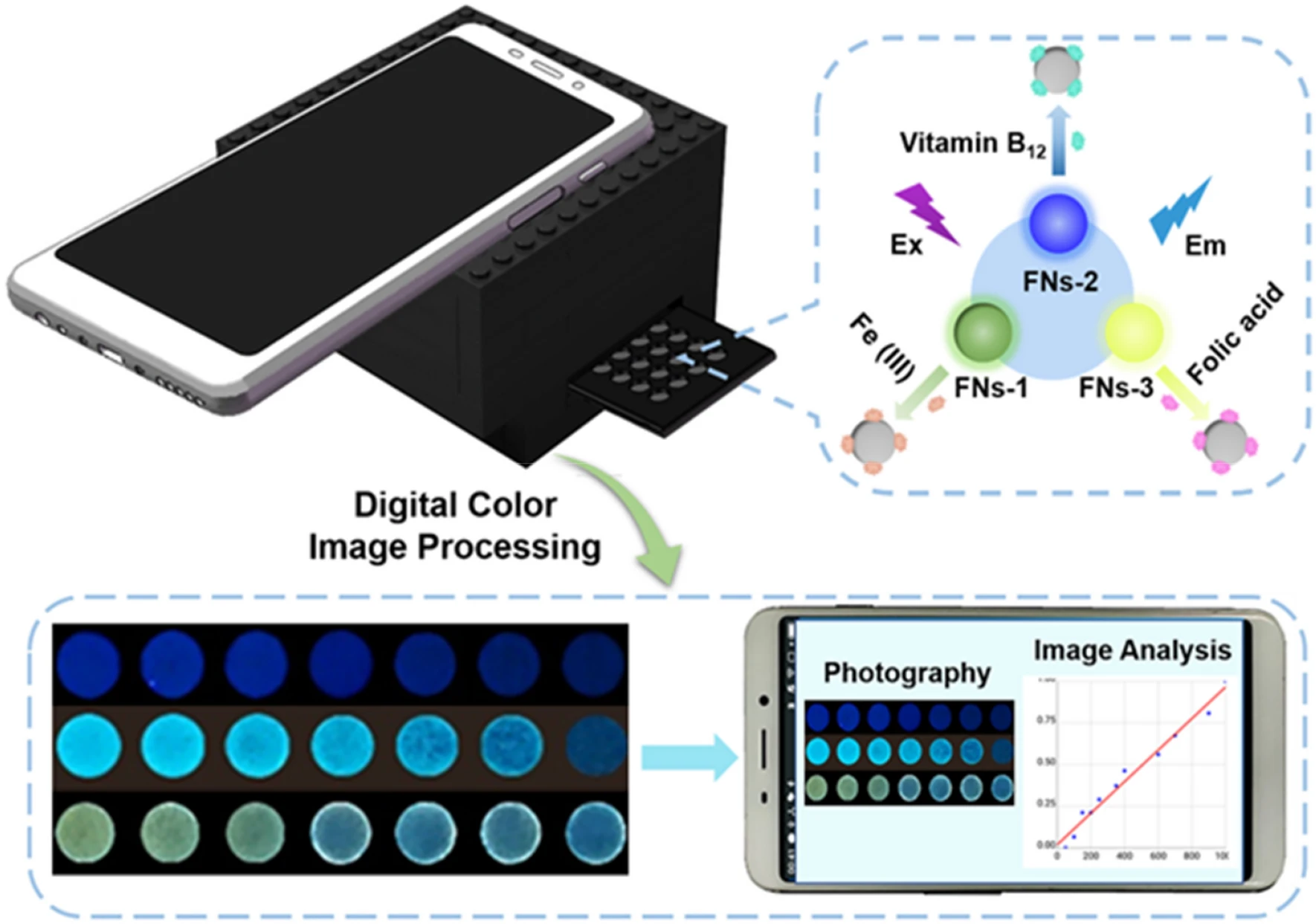
Abstract. This work reports on a smartphone-based quantitative POCT system which consists of a paper-based microarray chip, a homemade LEGO dark-box, and a smartphone installed with custom-designed FChip-APP, for on-site quantitation of Fe3+, Vitamin 12 (VB12), and folic acid (FA). Collection and automatic analysis of fluorescence turn-off response of three kinds of fluorescent nanoprobes which are coated onto filter papers by a smartphone-based device is the principle behind this study. The POCT system exhibits good analytical performance for multiplexed analysis of Fe3+, VB12 and FA with a wide linear range (Fe3+, 1.0–14.0 μg mL−1 (R2 = 0.983); VB12, 1.35–40.0 μg mL−1 (R2 = 0.991); FA, 2.0–26.0 μg mL−1 (R2 = 0.994)) and low detection limit (Fe3+, 0.35 μg mL−1; VB12, 0.47 μg mL−1; FA, 0.56 μg mL−1). The cost and weight of the whole system are ~ $220 and ~ 600 g per set, highlighting its cost-effectiveness and portability. The simple operation procedures and user-friendly interface of the FChip-APP validate the ease-of-use feature of the reported system. This versatile smartphone-based quantitative POCT system provides a cost-effective and easy-of-use method for screening the context-specific causes of anemia and thus its effective interventions in the future, especially in resource-limited areas.
by Zhao, J. K.; Chen, X.; Ho, K.-H.; Cai, C.; Yang, M*.; Yi C. Q*
Chinese Chemical Letters, 2021, 32, 66-86.
by Wang, Q.; Shi, Y. P.; Chen, W. D.; Li, C.-W.; Yang, M.; Yi C. Q*.
Mikrochimica acta, 2021, 188, 9.
by Huili Wang, Xiang jun Mu, Wan di Chen, Changqing Yi, Fengfu Fu, Mei-Jin Li*
Talanta, 2021, 221, 121428.


